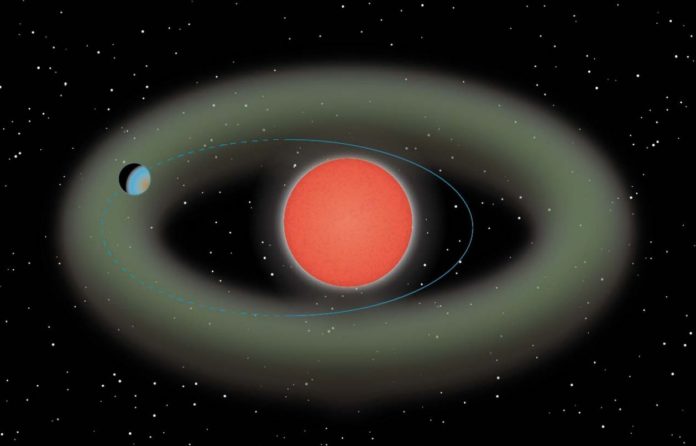A super-Earth planet has been discovered 37 light-years from Earth near a red dwarf star’s habitable zone. This is the first finding made by a brand-new instrument on the Subaru Telescope, and it presents an opportunity to look into the likelihood of life existing on planets orbiting nearby stars.
We may anticipate that the Subaru Telescope will find further, perhaps even better, candidates for habitable planets around red dwarfs after such a good first finding.
Most of the stars in the Milky Way Galaxy are red dwarfs, which are smaller than the Sun. There are a lot of red dwarfs in the area around the Sun.
Because of this, they are important places to look for nearby extrasolar planets and life on other planets. Red dwarfs are cooler than other types of stars and emit less visible light, which makes it challenging to study them.
Red dwarfs are more visible at infrared wavelengths. In order to look for evidence of planets surrounding red dwarf stars, the Astrobiology Center in Japan created an infrared observational device installed atop the Subaru Telescope. IRD stands for Infrared Doppler, the observational technique employed in this investigation.
The first results of this investigation show that Ross 508, a star 37 light-years away in the constellation Serpens, is orbited by a super-Earth with four times the mass of our planet.
Ross 508 b is a planet that orbits its host star at the inner border of the habitable zone and has a year that is only 11 Earth days long.
It’s interesting to note that there are signs the orbit is elliptical, which would indicate that for a portion of the orbit the planet would be in the habitable zone, the area where conditions are favorable for liquid water to exist on the planet’s surface. Further research is needed to determine whether water and life exist.
It seems too good to be true that the first planet discovered using this new technique is so enticingly close to the habitable zone, but it is encouraging for subsequent discoveries.
It has been 14 years since the IRD’s development began, says Bun’ei Sato, a professor at the Tokyo Institute of Technology and the search’s lead investigator.
“We have continued our development and research with the hope of finding a planet exactly like Ross 508 b.”
Image Credit: Getty
You were reading: Astronomers Have Discovered A Super-Earth Close To The Habitable Zone
